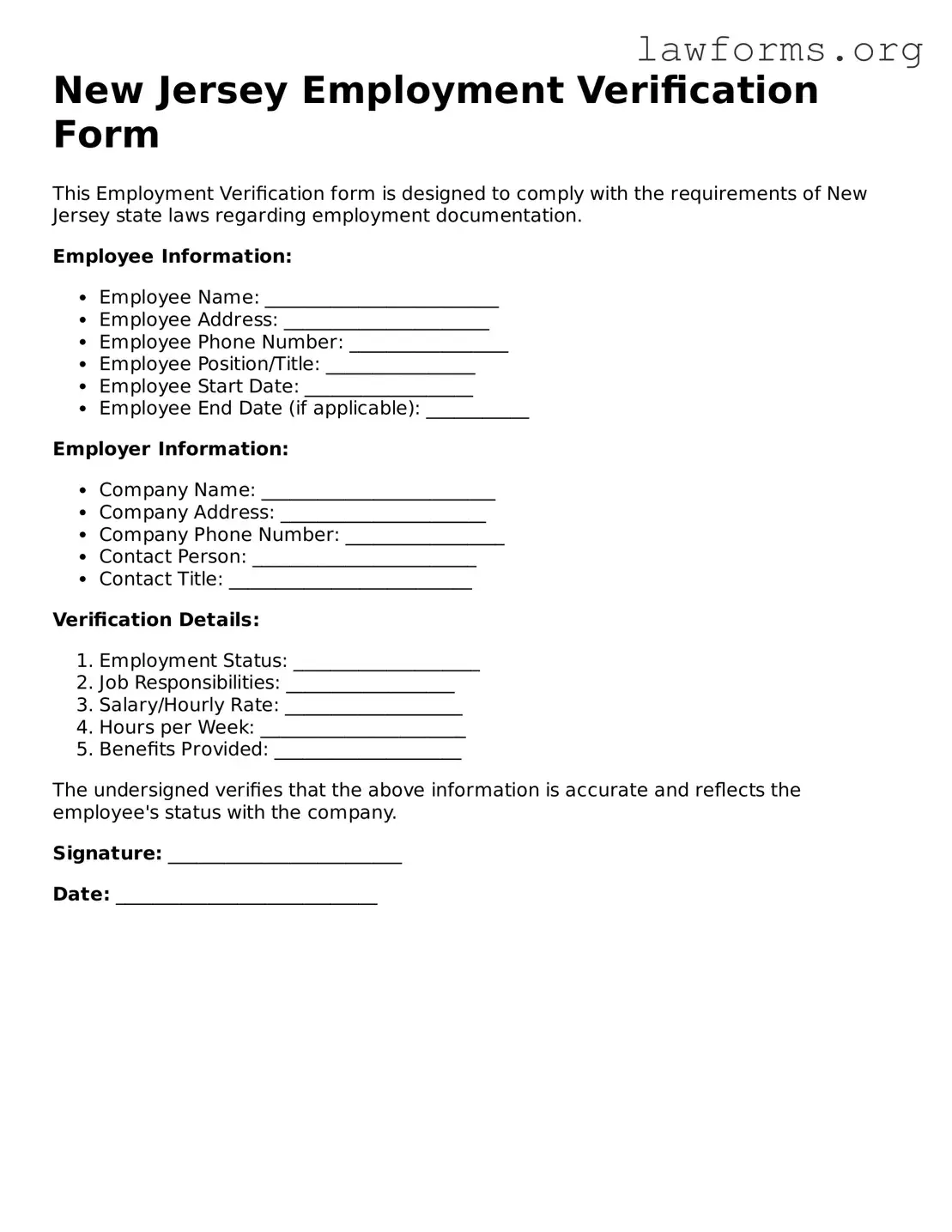New Jersey Employment Verification Form
This Employment Verification form is designed to comply with the requirements of New Jersey state laws regarding employment documentation.
Employee Information:
- Employee Name: _________________________
- Employee Address: ______________________
- Employee Phone Number: _________________
- Employee Position/Title: ________________
- Employee Start Date: __________________
- Employee End Date (if applicable): ___________
Employer Information:
- Company Name: _________________________
- Company Address: ______________________
- Company Phone Number: _________________
- Contact Person: ________________________
- Contact Title: __________________________
Verification Details:
- Employment Status: ____________________
- Job Responsibilities: __________________
- Salary/Hourly Rate: ___________________
- Hours per Week: ______________________
- Benefits Provided: ____________________
The undersigned verifies that the above information is accurate and reflects the employee's status with the company.
Signature: _________________________
Date: ____________________________
